Mon dieu! Could it be that Your West Coast Oenophile is going to switch his allegiance to Bordelaise wines? Will Sostevinobile become a paean to the vignerons of France?
There are numerous reasons I attend trade tastings for imported wines, despite my unyielding commitment to serve only sustainably-grown wines from the West Coast (meaning British Columbia, Washington, Oregon, California, Baja Norte, and perhaps a little pocket across the border in Arizona), including sourcing accounts for my trade tasting venue, familiarizing myself with varietals that have only a small presence here, like Canaiolo, Saperavi, Assyrtiko, Dreirebe, Chasselas Doré, Mencia, to name a few, or simply to socialize with other wine trade comrades. Rarely, however, do I leave one of these events feeling that I am perhaps missing out on something with my attenuated focus. But, in the interest of objectivity, I have to concede that last month’s showcase of the 2016 vintage from the Association de Grands Crus Classés de Saint-Emilion was truly spectacular.
The homage California pays to French viticulture is, of course, centered on Bordeaux, but within this spectrum, the focus falls predominantly on the Left Bank and the prestige of the Premier Cru houses, which skew towards Cabernet Sauvignon. But among the AOCs of the Right Bank, Merlot predominates, as exemplified by what, until the recent Pinotphile craze, was annually the world’s most expensive wine, Pomerol’s Château Pétrus.
 Saint-Emilion lies to the south of Pomerol and is distinguished by wines that blend Merlot and Cabernet Franc. Principal protagonists here include Château Ausone and the legendary Château Cheval Blanc, whose namesake bottling is generally acclaimed as the greatest wine ever by wine cognoscenti worldwide, the only debate being a preference for the 1947 or 1961 vintages. Malheureusement, neither of these houses nor their fellow Premiers Grands Crus Classés A wineries, Château Angélus and Château Pavie participated in the San Francisco tasting. And though none of Saint-Emilion’s Premier Grand Cru Classé B chateaux were on hand either, 18 of the 64 Grand Cru Classé houses poured their 2016s, along with a library wine of their own choosing.
Saint-Emilion lies to the south of Pomerol and is distinguished by wines that blend Merlot and Cabernet Franc. Principal protagonists here include Château Ausone and the legendary Château Cheval Blanc, whose namesake bottling is generally acclaimed as the greatest wine ever by wine cognoscenti worldwide, the only debate being a preference for the 1947 or 1961 vintages. Malheureusement, neither of these houses nor their fellow Premiers Grands Crus Classés A wineries, Château Angélus and Château Pavie participated in the San Francisco tasting. And though none of Saint-Emilion’s Premier Grand Cru Classé B chateaux were on hand either, 18 of the 64 Grand Cru Classé houses poured their 2016s, along with a library wine of their own choosing.
Across the board these wines were uniformly excellent, a testament to their third-tier status that only could make one wonder what the various Premier Cru Classé wines might offer. My preference leaned heavily toward those wines that married a higher percentage of Cabernet Franc or even featured Merlot as the secondary varietal. And given the leanings of my California-honed palate, the relatively high (14-15.5%) alcohol content of most, compared to the restrained (12-14%) level of Médoc’s Premier Grand Cru, certainly factored into the appeal.
Unfortunately, I cannot provide further details or observations on the individual wines. The promoters of this event did not correlate the printing of their program guide with the number of RSVPs; as such, attendees like myself, who strive to take meticulous notes at tastings were left to our own devices, something that can be extremely onerous when having to deal with a foreign language (mon français est un peu faible ces jours). And so I took none, leaving these wines to the recesses of my memory.
At least Team Balzac designed a guide for their event, which they subsequently emailed to attendees. Two other major tastings I attend last month eschewed printing programs altogether. Given that these events both commanded steep ticket prices, I could take the promoters to task for not allocating a portion of their gross revenue for such a relatively inexpensive production (I am well aware of this expense, have personally designed the brochures for every wine tasting I have curated). But the issue here isn’t cost, but the difficulty such an omission creates in trying to enjoy the wines, notate them, and navigate the entire event with the degree of alacrity it demands.
Many readers here know that, after my first career in winery Mergers & Acquisitions, I spent nearly 25 years wallowing in the recesses of the advertising & marketing industry. Though nominally a copywriter, I was compelled to learn graphic design, and with that, acquire a concomitant fluidity in numerous word processing, page layout, and desktop design programs. Yet even with a high degree of expertise in these softwares, navigating the mobile versions, particularly on an iPhone, is cumbersome, if not outright challenging. There are no easy shortcuts to this process—being confronted with having to record an event on Notes requires typing out every single word, all while trying to balance a glass, maintain a dialogue with the winemaker, and keep from hogging space at the table from other attendees. Plus, this is just as much an imposition on the wineries, who are paying fees and donating bottles with the expectation of having the rapt attention of trade individuals, either for purchasing their wines or promoting them.
 This is not to say that I didn’t thoroughly enjoy Carlo Niboli’s second staging of CabFest at the Westfield. Given my struggles with producing wine events like CalAsia these past two years, I can only defer to the success of his efforts, which included the first public tasting (as far as I know) of Napa’s mythic Ghost Horse, the wine that has eclipsed Screaming Eagle’s claim to California’s top pricing. Here, the 2015 Fantome, merely the fourth tier of Todd Anderson’s Cabernets (priced at a meager $1500/bottle), proved an extraordinary wine well worth its rarefied claim. Even so, a lofty price does not ensure exclusivity, as the 2004 Harry’s Vineyard Cabernet Sauvignon from Hesperian proved a worthy counter. Also as impressive: the 2015 Cabernet Sauvignon from Alison Green Doran’s Hoot Owl Creek and the 2015 Red Wine Blend, an equal marriage of Cabernet Sauvignon and Merlot, produced by Laurie Maurer Shelton’s CAMi.
This is not to say that I didn’t thoroughly enjoy Carlo Niboli’s second staging of CabFest at the Westfield. Given my struggles with producing wine events like CalAsia these past two years, I can only defer to the success of his efforts, which included the first public tasting (as far as I know) of Napa’s mythic Ghost Horse, the wine that has eclipsed Screaming Eagle’s claim to California’s top pricing. Here, the 2015 Fantome, merely the fourth tier of Todd Anderson’s Cabernets (priced at a meager $1500/bottle), proved an extraordinary wine well worth its rarefied claim. Even so, a lofty price does not ensure exclusivity, as the 2004 Harry’s Vineyard Cabernet Sauvignon from Hesperian proved a worthy counter. Also as impressive: the 2015 Cabernet Sauvignon from Alison Green Doran’s Hoot Owl Creek and the 2015 Red Wine Blend, an equal marriage of Cabernet Sauvignon and Merlot, produced by Laurie Maurer Shelton’s CAMi.
I found the 2016 Cabernet Sauvignon Emily Kestrel from Summit Lake exceptional, as was the 2017 Stagecoach Cabernet Sauvignon from newcomer Stringer Cellars. On a more bittersweet note, Cabfest marked what will likely be the last public tasting for Battle Estate Vineyards, which has decided to cease operations after the devastation of the Kincade Fire. Wines like their 2015 Cabernet Sauvignon from Alexander Valley will be sorely missed.
And while I did not miss tasting the wide range of other Cabernets, Cab Francs, and Bordeaux blends at this event, awkwardness of trying to record my impressions with a virtual keyboard on a 5.5″ display, while striving to balance my glass and continue conversing with the winemaker left most of my notes in shambles, despite generally favorable impressions of Chiron, Obvious, Zialena, V, Howell at the Moon, Ballentine, Stonestreet, Angwin Estate, Ron Rubin, Guarachi, Robert Young, Medlock Ames, Sutro, Lancaster, and Patel.
I had hoped not to confront the same dilemma the following weekend at the debut of Wine Call SF at the Old Mint. The two-day tasting featured over 50 wineries, predominantly from the West Coast, and selected from the leading proponents of the natural wine movement. It seemed incomprehensible that an event of this scale would not feature a guide—and a professionally designed program at that. But alas, I once again was compelled to wing my way through with my iPhone, this time starting by pasting the winery roster featured on the Website into a Pages document.
An utter catastrophe! Though I am highly skilled in this app on my MacBook Pro and can navigate the differences in the mobile version on my iPadcusing a keyboard, here there is no way to paste text into the text field without copyng its formatting, which, in this case, included the hyperlinks that launched a Web page nearly every time I tried to navigate the cursor. Which, in turn, meant it took three times as long to type, once I finally got things placed where I needed them.
But then entire sections of my document were somehow deleted, which compelled me to return to the various wine stations and re-record ratings on what they had poured. Not impossible, of course, but enormously frustrating to the point that, were it not for my reluctance to shell out another $1,000 to replace it, I came close to flinging my iPhone across the room.
More importantly, the struggles with my note-taking consumed an inordinate amount of time, so much so that even with three separate trips to The Old Mint over Saturday and Sunday, I still missed sampling half a dozen of the wineries. Insurmountable impositions like this hurt not only attendees like Sostevinobile, but penalize all the winemakers who put in the time and effort to make an event succeed.
Nonetheless, I did manage to salvage a good portion of my observations. The absolute standouts had to be the 2018 Flaws, an impeccable Abouriou from Absentee, who ironically was away from his table while I was sampling, and and a luxuriant 2015 Carignane from Faith Armstong-Foster’s Onward, which, along with sister label Farmstrong, specializes in this wondrous Rhône varietal.
Close behind, four other wines astounded, as well, starting with another of Onward’s remarkable bottlings, the 2017 Pétillant Naturel Rosé of Pinot Noir. Even though he has now already sold out, Hank Beckmeyer produced a near-flawless 2018 Viognier at his La Clarine Farm in Somerset. Having partied on Friday with Anna & David Delaski at the Pretty in Pinot Prom—following a full day at the annual Pinotfest, I was struck by the contrast of Solminer’s 2018 Dry Riesling Coquelicot Vineyard, one of the several Germanic varietals they are producing. Trekking from Oregon, Division Wine Making Company also proved a formidable presence here, making a statement its 2017 Granit Cabernet Franc.
If my notes had stayed intact, I could go into finer detail on the remaining wines, but, as it were, numerous others made significant impressions, including Sacramento’s Haarmeyer Wine Cellars, with their 2017 Riesling Wirz Vineyard and the ever-reliable Old World Winery with yet another standout vintage, their 2015 Luminous, a luscious Abouriou from Sherry Martinelli vineyard in Windsor.
Shaunt Oungoulian’s Les Lunes featured a pair of intriguing bottlings, the 2017 Carignane Arnold’s Block and a deftly blended 2016 Cabernet Sauvignon/Merlot Coplan Vineyard. His former winemaking partner, Martha Stoumen, now well into her connubial bliss, tributed her recent marriage with the 2018 Honeymoon, a Colombard blend with 15% Chardonnay. Likewise, Breaking Bread, an offshoot of Kokomo, debuted their 2018 Zinfandel Redwood Valley with considerable aplomb.
The splendidly-named Caleb Leisure specializes in fermenting their wines in qvevri, the traditional Georgian buried clay pots (and killer Scrabble word!), exemplified here with the 2018 Other Hand, a Chalk Hill Cabernet Sauvignon. A bit of an anomaly, Ruth Lewandowski, a winery based in Salt Lake City but sourcing its grapes from Mendocino, featured its eclectic blends, highlighted by the 2018 Boaz, a mélange of Carignane, Cabernet Sauvignon, and Grenache. And hailing from Los Alamos—California, not New Mexico, Lo-Fi Wines showcased their 2018 Sparkling Rosé, a Pét-Nat rendition of Cabernet Franc.
The much-lauded Carboniste only produces sparkling wines, exemplified best by the 2018 Mackerel, a Pét-Nat Pinot Grigio. Further to the south, in Escondido, J. Brix featured this varietal as a ramato, the 2018 Nomine Amoris Skin-Contact Pinot Gris. Returning north, Keegan Mayo’s Assiduous Wines offered a less avant-garde yet equally appealing rendition, their 2018 Pinot Gris Regan Vineyard.
Wine Call SF featured keynotes both days by Tegan Passalacqua, whose Sandlands Vineyards underscored his authority on natural winemaking, evidenced here with two superb offerings: the 2018 Grenache and the 2018 Cinsault. Tegan is one of the leading proponents of the next wave of vineyardists in Lodi; Abe Schoener’s Scholium Project, recently relocated to Los Angeles, sourced their Zinfandel from Passalacqua’s plantings there for their 2017 FTP-Z Kirschenmann Ranch. Meanwhile, their excellent 2012 Delta Blend identifies neither the Sacramento vineyards from which it is sourced, nor its varietals (though I beleive Verdelho was a major component). Also sourcing from the Delta, Maître de Chai selected its grapes from Wilson Vineyards for its 2018 Sparkling Chenin Blanc. Its 2017 Kiekegaard Chenin Blanc, however, comes from the same Sonoma vineyard Leo Steen utilizes.
Last but not least, Craft Wine Company trekked from Oregon to feature its 2018 Origin Chenin Blanc. And even further north, Washington’s Swick Wines produced a panoply of Italian varietal wines, notably the Barolo-worthy 2018 Nebbiolo.
Washington tends to be the preferred West Coast domain for Riesling, with notable exceptions like Santa Cruz’s Stirm Wine Company, which produces a number of different bottlings. But here Ryan flourished with a relatively obscure, though formerly prolific grape, with his 2018 Mission. Another Santa Cruz winery, Florèz, may not tend toward exotic varietals or blends, but comported itself memorably with their elegant 2017 Chardonnay.
Some may prefer to call it Mourvèdre or Monastrell, but the 2016 Mataro Del Barbra Vineyard from Erggelet Brothers was still a masterful wine. And it seems fitting that my final entry comes from Amador’s End of Nowhere, with a stellar 2018 #1 Crush Rosé, a Zinfandel rendering and their 2017 Nemesis, a Yolo County Barbera.
I suppose if I had been able to take notes easily, this column might have run on until 2020, so perhaps there is a silver lining here. But as long as trade tastings resort to the expediency of not printing programs, I will keep harping on this issue.
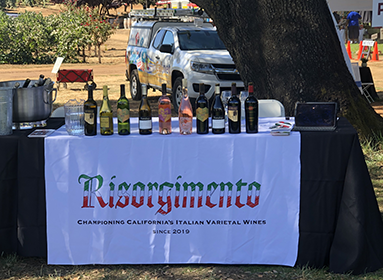
 Admittedly, Clarksburg will be on few people’s radar as a major wine region, but the newly-restored barn at Heringer easily qualifies as one of the most inviting tasting rooms I have ever visited. And in keeping with it reputation as the pinnacle of this AVA, our host winery shared with this event a 2018 Moscato (subsequently revealed to be Muscat Canelli) and a delightful 2018 Pinot Gris. But their forte at Wines of Clarksburg proved to be the spectacular 2015 Tempranillo, a wine ideally suited to the evening’s Andalusian breeze.
Admittedly, Clarksburg will be on few people’s radar as a major wine region, but the newly-restored barn at Heringer easily qualifies as one of the most inviting tasting rooms I have ever visited. And in keeping with it reputation as the pinnacle of this AVA, our host winery shared with this event a 2018 Moscato (subsequently revealed to be Muscat Canelli) and a delightful 2018 Pinot Gris. But their forte at Wines of Clarksburg proved to be the spectacular 2015 Tempranillo, a wine ideally suited to the evening’s Andalusian breeze.  It has been an unusual month or so for Your West Coast Oenophile. My dedication to focusing the wine program at
It has been an unusual month or so for Your West Coast Oenophile. My dedication to focusing the wine program at 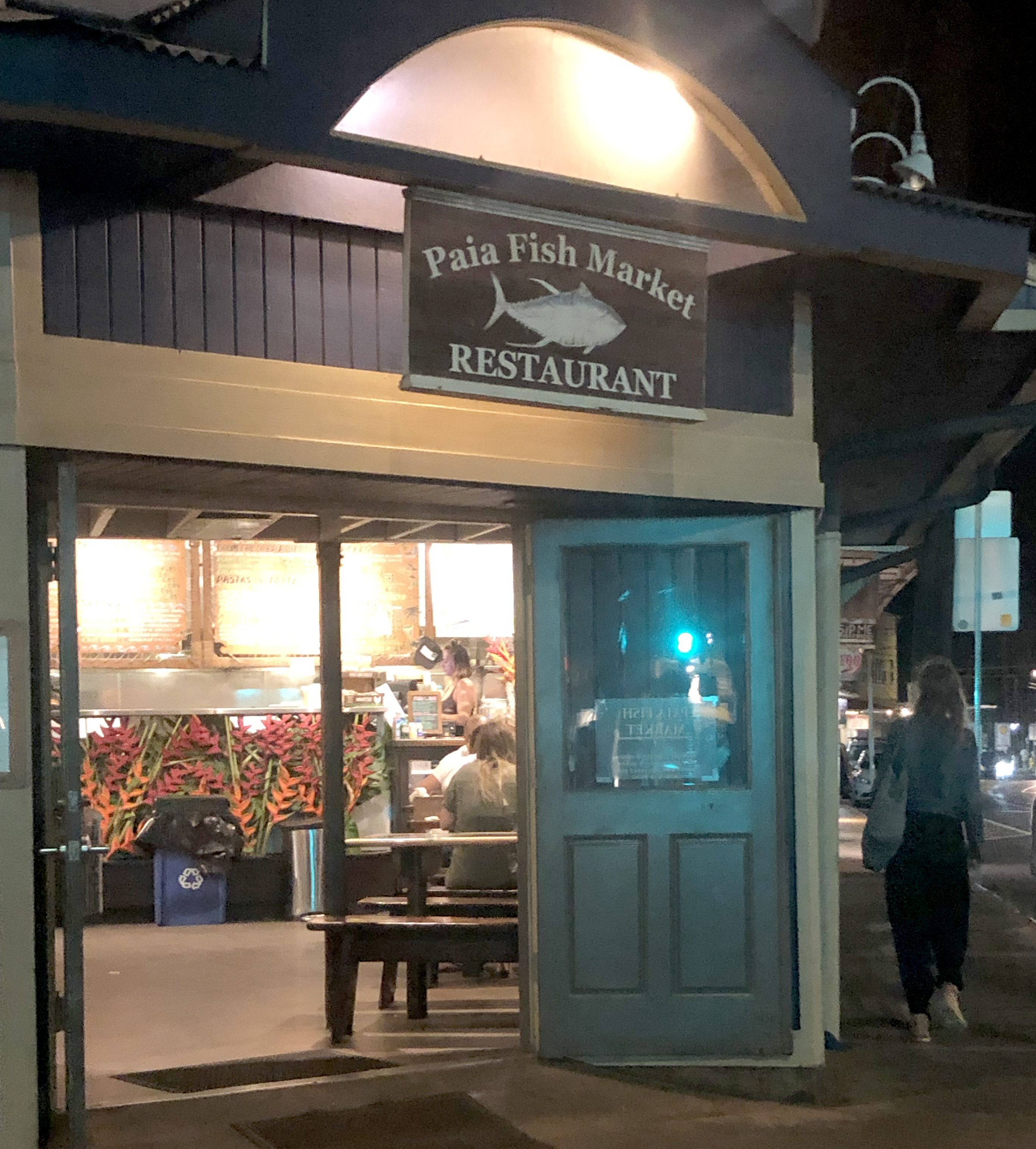 My slection could not have been more fortuitous. The popularity of this quaint shack, with its multiple communal dining benches, bespoke the quality of its exceptionally well-prepared fare. I opted for one of the Specials of the Day, the fresh Opah, grilled to perfection, along with a bountiful helping of rice and potatoes. The obligatory glass of wine, Tuck Beckstoffer’s 2018 Hogwash Rosé (sorry, Ulupalakua), proved a worthy accompaniment to this ample repast, while the anything-but-touristy tab could easily be afforded two or three times a week.
My slection could not have been more fortuitous. The popularity of this quaint shack, with its multiple communal dining benches, bespoke the quality of its exceptionally well-prepared fare. I opted for one of the Specials of the Day, the fresh Opah, grilled to perfection, along with a bountiful helping of rice and potatoes. The obligatory glass of wine, Tuck Beckstoffer’s 2018 Hogwash Rosé (sorry, Ulupalakua), proved a worthy accompaniment to this ample repast, while the anything-but-touristy tab could easily be afforded two or three times a week. 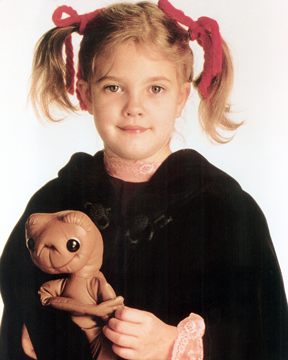 wines after her less-than-stellar vintages originating from Italy at the beginning of this decade. Now calling Monterey home, these wines included her 2017 Rosé Of Pinot Noir alongside Carmel Ridge’s 2015 East Bend Chardonnay and their 2014 First Row Pinot Noir. Another collaboration,
wines after her less-than-stellar vintages originating from Italy at the beginning of this decade. Now calling Monterey home, these wines included her 2017 Rosé Of Pinot Noir alongside Carmel Ridge’s 2015 East Bend Chardonnay and their 2014 First Row Pinot Noir. Another collaboration, 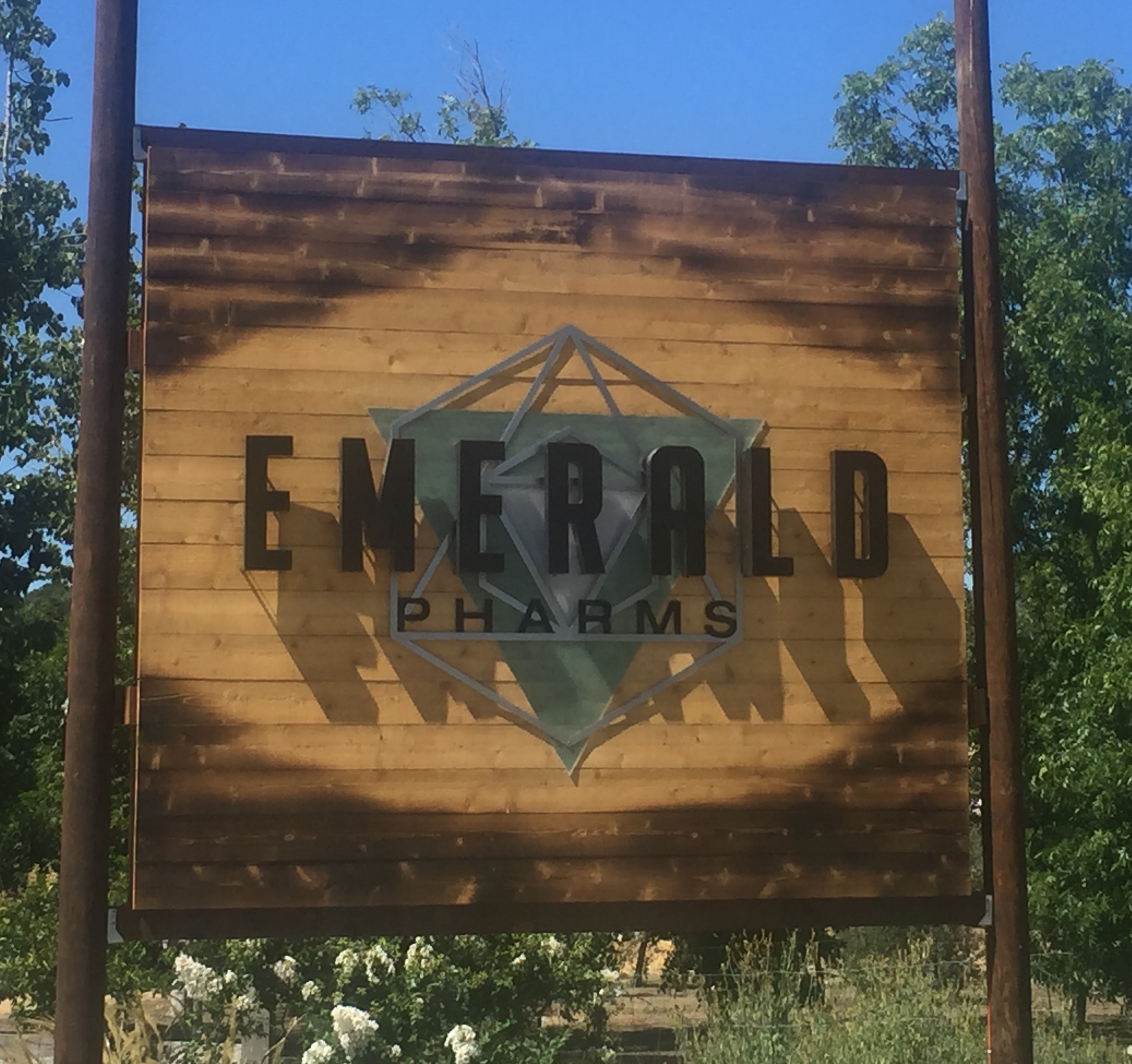


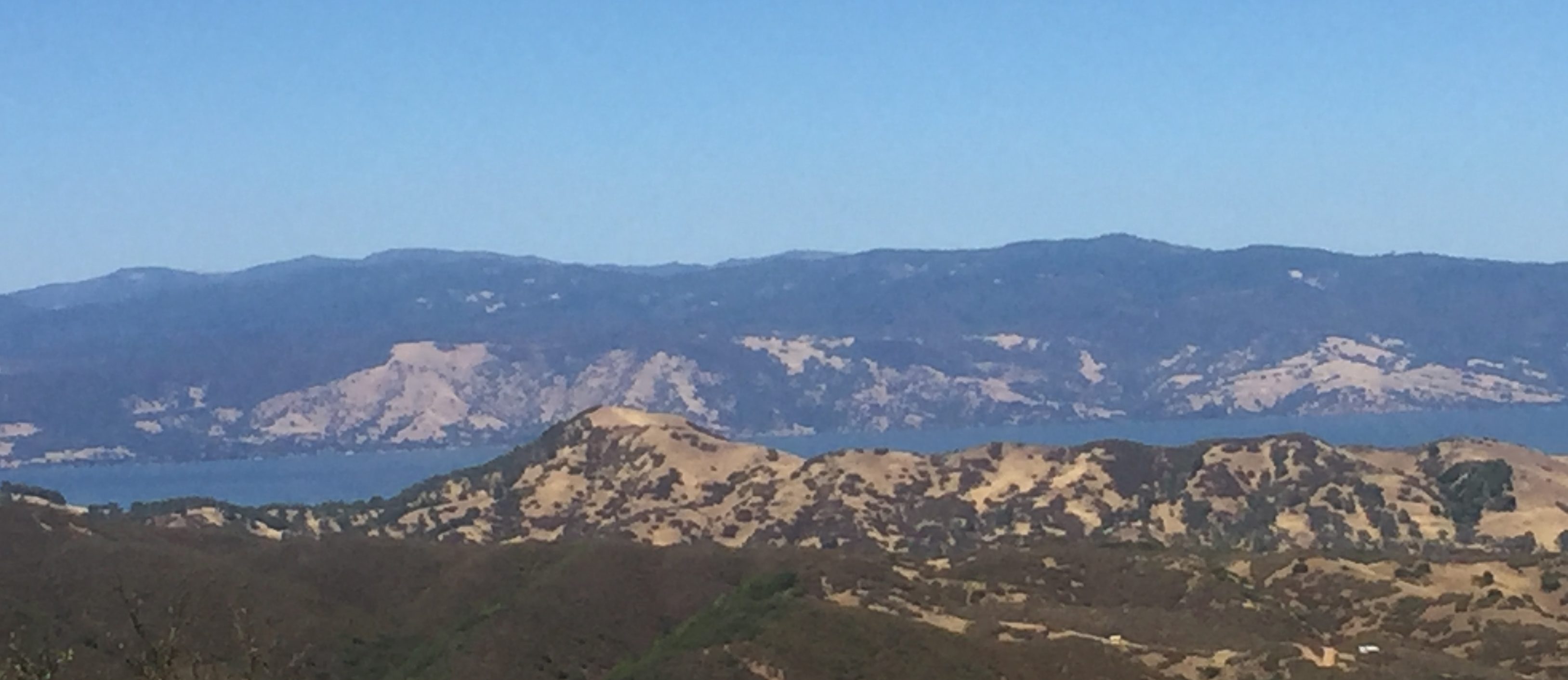

 Oracle World Headquarters
Oracle World Headquarters